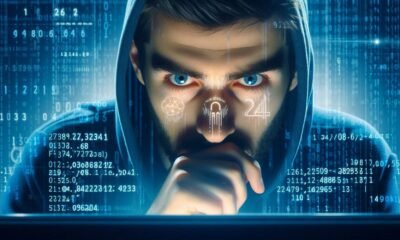Tech
The Psychology of Web Design: How Colors and Layout Influence User Behavior

When people think of web design, they often focus on flashy visuals or slick animations, but the secret sauce lies in something far more profound—psychology. At Web Design Columbia, we’ve spent nearly two decades crafting websites that look good and subtly nudge users to click that button, fill out that form, or make that purchase. With Columbia, South Carolina, buzzing as a hub for businesses ready to embrace the digital age, we’ve become experts in decoding the psychology behind successful web design.
In this article, I’ll take you on a journey through the fascinating world of web design psychology. We’ll unravel how colors and layouts influence user behavior, backed by technical insights, global trends, and even humor. Oh, and stick around—there’s a surprise call to action at the end. Spoiler alert: it involves Web Design Columbia.
Table of Contents
The Hidden Language of Color: What Your Website is Saying Without Words
Did you know that 90% of a user’s first impression of your website is based on color alone? Let that sink in. Whether it’s the calming blues of Facebook or the bold reds of YouTube, colors evoke emotions faster than words ever could.
But it’s not all rainbows and unicorns. Color’s psychological impact depends heavily on cultural and individual perceptions. For instance, while green often symbolizes growth and health in the U.S., it can signify danger in some Eastern cultures. Columbia SC web design services like ours are well-versed in navigating these nuances, ensuring your website’s palette speaks the right language to your audience.
Here’s where things get technical. Studies show that blue, the most universally liked color, can increase trust by up to 30%. No wonder so many banks and tech companies use it. But overdo it, and your site might feel cold and impersonal. This is where a Columbia SC web agency like ours shines—striking that perfect balance between inviting and professional.
Layouts: The Invisible Hand Guiding Your Users
If colors are the mood-setters, layouts are the tour guides. A well-structured layout is like a good restaurant menu—it subtly directs your choices without making you feel pressured. But here’s the kicker: 38% of users will stop engaging with a website if the layout is unattractive. Yes, nearly four in ten people will ghost your site faster than you can say “404 error.”
Take the rise of grid-based designs popularized by giants like Pinterest. The neat, modular structure creates a sense of order, making it easy for users to navigate. But grids aren’t without their downsides. When overused, they can make a website feel cookie-cutter. Columbia web development companies, including Web Design Columbia, know how to breathe life into these grids, adding unique elements that engage users.
One technical tidbit that often surprises our clients is how layouts affect loading speeds. Did you know that a complex layout with heavy graphics can increase bounce rates by 32%? Nobody likes waiting—especially not in the age of instant gratification. This is why optimizing layouts for performance is as critical as making them visually appealing.
User Behavior Studies: What the Numbers Tell Us
Let’s get nerdy for a moment. According to a 2023 study by Google, websites with visually appealing and easy-to-navigate layouts see a 50% higher conversion rate. That’s not just a number; that’s your potential revenue doubling. And while aesthetics play a role, functionality is the unsung hero here.
Consider this: Amazon, the e-commerce juggernaut, famously added a “Buy Now” button that simplified its checkout process. The result? A 15% increase in sales, equating to billions in revenue. This small change underscores a massive truth in web psychology—every pixel matters.
But it’s not just about emulating the Amazons of the world. For smaller businesses in Columbia, South Carolina, the focus should be on creating intuitive, user-friendly designs that cater to local audiences. At Web Design Columbia, we pride ourselves on understanding the pulse of the Columbia market, tailoring each site to resonate with its audience.
The Double-Edged Sword of Trends
Trends are a double-edged sword in web design. While they can make your site feel modern and relevant, they can also date it faster than a ‘90s hairstyle. Remember parallax scrolling? It was all the rage a few years ago but is now often criticized for its slow load times and disorienting effects on users.
Flat design is another trend that sparked debates. Championing simplicity and functionality, it became the darling of web development—but not without its detractors. Critics argue that overly flat designs sacrifice user clarity for minimalism. For instance, clickable buttons often look too similar to static elements, leading to confusion. Columbia web development companies, including Web Design Columbia, have navigated these waters, finding ways to modernize sites while avoiding the pitfalls of fleeting fads.
Columbia’s Digital Scene: A Case Study in Web Design Success
Columbia, SC, isn’t just about southern charm and picturesque landscapes; it’s a thriving hub for businesses looking to make their mark online. I’ll share one of our proudest moments at Web Design Columbia. A local retailer struggling with an outdated website approached us for help. Their site was a Frankenstein of old-school layouts and mismatched colors—think MySpace circa 2005.
After a complete overhaul, focusing on user behavior principles and modern design practices, their site saw a 200% increase in traffic within three months. Sales followed suit, and their brand image transformed overnight. Stories like these keep us passionate about what we do.
Designing for Conversions: The Science Behind the Clicks
Let’s get to the heart of what every business wants from its website: conversions. Whether it’s making a purchase, signing up for a newsletter, or scheduling a consultation, the end goal is always action. And here’s the thing: web design isn’t just art—it’s science.
One fascinating fact is that users form an opinion about a website in just 0.05 seconds—less time than it takes to blink. The first impression is often driven by visual hierarchy, a design principle that organizes content in order of importance. For example, placing your call-to-action (CTA) in a prominent position, like the top right of a page, can boost conversion rates by up to 50%.
But beware of overloading users with options. Amazon famously uses a clean design for its checkout process, removing all unnecessary links and distractions. This approach has been so successful that the “one-click checkout” has become an industry benchmark. For businesses in Columbia, SC, web development strategies that simplify user flows can make all the difference. At Web Design Columbia, we’ve refined this approach, ensuring your site is a conversion machine without feeling like one.
The Psychology of Trust: Building Credibility Through Design
Trust is the currency of the internet, and your website is your wallet. Users are naturally skeptical; they’re handing over personal information, credit card details, or their time, after all. So, how do you earn their trust? Through design.
One key element is white space—the empty areas between elements on a page. Studies show that white space can increase comprehension by up to 20%. It creates breathing room, making your site feel organized and professional. But there is too much white space, and you risk making your site look unfinished. Striking this balance is where Columbia SC web development companies excel, especially Web Design Columbia.
Another trust-building tactic is showcasing real testimonials and certifications. Research by BrightLocal revealed that 88% of consumers trust online reviews as much as personal recommendations. Including client success stories, particularly for Columbia, South Carolina businesses, helps local users connect and build confidence in your services.
Big Companies, Bigger Lessons: What We Can Learn from the Giants
Let’s turn our attention to the titans of the digital world. Companies like Google, Apple, and Tesla have mastered leveraging design psychology. Take Tesla’s minimalist product pages. They focus entirely on the car, with almost no distractions. The result? Users are drawn to explore further, often leading to a purchase.
Similarly, Apple’s website uses progressive disclosure, which only shows information as the user needs it. This keeps pages clean and prevents information overload. While this works wonders for global brands, it’s also highly effective for businesses in Columbia. Simplified, engaging designs resonate with audiences who want to quickly find what they’re looking for.
That said, even giants stumble. Remember when Google tried integrating its ill-fated Google+ into every corner of its ecosystem? Users revolted, forcing the company to rethink its approach. The lesson here? Even the best designs only consider user psychology and feedback.
When Trends Go Wrong: The Risks of Following the Herd
We touched on trends earlier, but it’s worth diving deeper into their pitfalls. Remember the skeuomorphic designs of the early 2010s? They mimicked real-world objects—like notepads or calculators—but were soon abandoned for being too literal and cluttered.
Today, trends like dark mode are in vogue. While it looks sleek and can reduce eye strain, it’s not always practical. Poor contrast in dark mode can make text difficult to read, especially for older users. Columbia web development companies, including Web Design Columbia, emphasize accessibility in all designs, ensuring no trend compromises usability.
Another risky trend is autoplaying media. Sure, a video that starts playing as soon as you land on a page can grab attention—but it can also annoy users and increase bounce rates. Balance is vital, and a local agency with experience, like Web Design Columbia, knows how to wield these tools judiciously.
Data-Driven Design: The Role of Analytics in Shaping User Experiences
Design is only half the battle; understanding how users interact with your site is the other. This is where analytics come in. Tools like Google Analytics and Hotjar provide invaluable insights, showing where users click, linger, and drop off.
For example, heatmaps reveal which areas of a page get the most attention. This data can help prioritize content placement, ensuring your most important elements get noticed. A Columbia SC web agency like Web Design Columbia regularly uses these tools to fine-tune designs, ensuring they’re visually stunning and highly effective.
Interestingly, even big companies sometimes ignore analytics at their peril. Take Yahoo, which famously missed user behavior trends, allowing Google to dominate the search engine space. Data isn’t just numbers; it’s the story of your users.
The Local Edge: Why Columbia, SC, Businesses Need Tailored Web Solutions
Columbia is more than just the capital of South Carolina; it’s a thriving community of entrepreneurs, small businesses, and innovators. But here’s the thing: what works for a tech startup in Silicon Valley won’t necessarily work for a boutique shop on Main Street in Columbia. Local businesses need web solutions that reflect their unique culture and audience.
This is where Web Design Columbia comes in. Our nearly two decades of experience have taught us that more than one-size-fits-all solutions is needed. By combining global best practices with local insights, we create websites that resonate with Columbia’s diverse audience while meeting the highest industry standards.
Turning Design into Business Success
Web design is more than aesthetics; it’s a powerful tool that shapes user behavior, builds trust, and drives conversions. From the psychology of colors to the intricacies of layouts, every element of your website tells a story. And in Columbia, South Carolina, where competition is fierce and first impressions matter, your website needs to stand out.
At Web Design Columbia, we’ve spent years mastering this craft. Whether it’s crafting layouts that guide users seamlessly or choosing colors that evoke the right emotions, we put psychology to work for your business. So, if you’re ready to transform your website into a powerhouse of engagement and conversions, let’s make it happen—because your success is our story.
Tech
Private, Safe, and Theirs: How One Tight-Knit Group Reclaimed Their Space

A private, always-there group helped Megan and her friends reconnect — without pressure, noise, or outsiders.
Megan, an ER nurse in Chicago, was used to long shifts, urgent decisions, and rarely having space for anything outside of work. Staying close to friends — especially her college roommates, now scattered across Seattle, Arizona, and New York — had become one more thing that slipped down her to-do list.
They had tried WhatsApp, FaceTime, and Zoom — each one seemed promising at first, but none of them stuck. The WhatsApp group chat quickly turned messy, with birthday emojis, random work updates, and a constant stream of unread messages. Megan hated that their phone numbers were exposed — one time, a stranger even tried to call her. FaceTime was supposed to feel intimate, but with three time zones and unpredictable schedules, it became more stress than connection. Zoom, meanwhile, just reminded her of hospital briefings — organized, structured, and completely joyless.
What frustrated Megan most wasn’t the tech itself. It was the feeling that every option pulled them further into other parts of their lives — work, family, logistics — and further away from each other.
A Private Chat That Doesn’t Weigh You Down
Candy, one of the girls in this tight-knit group, came across an app called Fambase and sent over a link. “It’s private,” she said. “No one else can find it — it’s just for us.” Megan didn’t think much of it at first, but something about the invitation felt different. Not flashy. Not performative. Just… quiet. So they gave it a try.
The group they created was quiet from the start. No usernames, no public search, no chance of strangers stumbling in. When Megan opened it for the first time, it felt… empty, in the best way. There were no unread badges, no message threads waiting to be caught up on. Just a clean, open room.
At first, she thought maybe something was missing. But then she realized — nothing sticks around. The messages disappear after 24 hours. There’s no archive to dig through, no scroll of half-read updates. And that’s exactly what made it feel different.
“It’s like the app lets you be present,” she thought. No pressure to keep up. No guilt for checking out. Just show up when you can — and everything else fades on its own.
Along the way, Megan also noticed a few features she hadn’t tried yet — things like creating quick polls, scheduling recurring events, even a set of animated stickers the app suggested based on the group’s vibe. It felt like there was more to explore if they ever wanted to, but for now, just being there was enough.
Live, Equal, and Fully Present
When Megan and her friends went live on Fambase, it didn’t feel like a call. It felt like walking into someone’s living room. No one had to “host” anything. No one was framed larger or placed front and center. All four faces simply appeared, side by side, like they had found their usual spots on the couch — even if that couch now spanned four states and three time zones.
There was no pressure to perform, no layout to fix, no decisions to make. Just show up, and everyone’s there, equally seen — like being on the same couch again, without anyone needing to run the show.
They’d talk about everything and nothing — weekend plans, weird dreams, who was secretly dating someone new. One time, they gave each other a virtual tour of their kitchens. Another night, they all opened wine at the same time and ended up debating which flavor of instant ramen was the most elite. It wasn’t about the topics. It was about the rhythm — familiar, unfiltered, alive.
And when the call ended, that was it. Nothing saved. No replays. Just a memory that belonged only to them. Megan loved that part the most. “I don’t need a transcript of our friendship,” she laughed. “I just want to be in it while it’s real.”
They’d set a quiet reminder for the next one, maybe drop a sticker in the meantime — usually the same one they now jokingly call “chaos sparkle.” But there was nothing they had to track, nothing they needed to revisit. The moment passed, and that was the point.
Megan liked it that way. It felt like breathing room.
If you’ve ever wished there were a way to stay connected that didn’t feel like work — something quieter than WhatsApp, more equal than Zoom, more human than a group thread — maybe this is it.
A space where no one watches, nothing’s recorded, and every day is a new beginning.
Fambase is where that space begins.
Tech
Why Dive Bomb Industries Is the Go-To Brand for Waterfowl Hunters

Waterfowl hunting is a deeply rooted tradition enjoyed by millions of outdoor enthusiasts across North America and beyond. The success of any hunt often hinges on the quality and reliability of the gear used, particularly decoys, blinds, and apparel that withstand harsh outdoor conditions. Among the many brands vying for the attention of hunters, Dive Bomb Industries has emerged as a clear favorite. Known for its innovative designs, direct-to-consumer approach, and steadfast commitment to quality, Dive Bomb Industries has become the go-to brand for waterfowl hunters. This article explores why Dive Bomb Industries stands out in the competitive hunting gear market and why it is trusted by hunters nationwide.
Table of Contents
A Legacy Built on Passion and Innovation
Founded in 2011, Dive Bomb Industries was born out of a passion for waterfowl hunting combined with a desire to improve the gear available to hunters. What set them apart from the beginning was their commitment to combining affordability, quality, and innovation — a trio not commonly found together in the hunting gear industry.
The founders, themselves avid hunters, understood firsthand the challenges waterfowl hunters face: unpredictable weather, rough terrain, and the need for gear that performs reliably without breaking the bank. This understanding fueled their mission to develop products that deliver maximum value and performance.
Direct-to-Consumer Model: Quality Meets Affordability
One of the most significant factors that make Dive Bomb Industries the preferred choice for waterfowl hunters is their direct-to-consumer sales model. By selling exclusively through their official website, they eliminate costly middlemen, distributors, and retail markups that typically inflate prices.
This model benefits customers by:
- Offering premium products at highly competitive prices.
- Ensuring consistent product quality without compromises.
- Providing transparent pricing and special discounts (e.g., military and law enforcement discounts).
- Allowing customers to purchase with confidence from the official source.
This approach has resonated well with hunters who seek to get the best value for their investment.
Product Excellence: Designed by Hunters for Hunters
Dive Bomb Industries offers a comprehensive range of products crafted specifically for waterfowl hunting, each designed with precision, durability, and effectiveness in mind.
1. Decoys: Realism that Works
At the core of their product lineup are their waterfowl decoys, widely regarded as some of the most realistic and effective on the market. Dive Bomb Industries’ decoys stand out because:
- They are developed using insights into waterfowl behavior and vision, incorporating features like non-glare coatings to prevent unnatural reflections.
- The designs take advantage of waterfowl’s monocular vision, creating lifelike profiles that fool birds from a distance.
- Constructed with durable, weather-resistant materials that withstand prolonged exposure to water, sun, and rough conditions.
- Tested rigorously in real hunting environments to ensure performance and longevity.
These decoys have helped countless hunters increase their success rates, making them a trusted choice season after season.
2. Hunting Blinds: Concealment and Comfort
Dive Bomb’s hunting blinds are engineered to provide effective concealment while being lightweight and easy to transport. Hunters appreciate:
- The weather-resistant fabrics and sturdy frames that hold up against wind and rain.
- Blinds designed with quick setup and breakdown features for efficient field use.
- Camouflage patterns that blend naturally into a variety of habitats.
This combination of durability, portability, and stealth enhances hunters’ ability to stay hidden and comfortable during long hours afield.
3. Apparel: Performance Meets Style
The brand’s apparel line caters to hunters looking for clothing that balances outdoor functionality with everyday comfort. From breathable t-shirts and hoodies to hats and outerwear, Dive Bomb Industries provides gear that:
- Uses high-quality fabrics designed for moisture-wicking and temperature regulation.
- Features designs inspired by the hunting lifestyle.
- Offers durability for rugged outdoor use.
Their apparel appeals to a wide audience, from hardcore hunters to casual outdoor enthusiasts.
Community Engagement: More Than Just a Brand
Dive Bomb Industries is committed to building a community of passionate waterfowl hunters. They actively engage with customers through:
- A strong social media presence on platforms like Facebook, Instagram, TikTok, and YouTube, sharing hunting tips, user stories, and product updates.
- The Dive Bomb Squadcast, a podcast that dives deep into hunting topics, gear reviews, and interviews with experts.
- Listening closely to customer feedback to guide product development and improve offerings continuously.
This community-first approach builds trust and loyalty, making customers feel like valued partners rather than just buyers.
Outstanding Customer Support and Satisfaction Guarantee
Another reason Dive Bomb Industries is a favorite among hunters is its reputation for excellent customer service. The company offers:
- Responsive support teams ready to assist with questions, orders, and troubleshooting.
- A 100% satisfaction guarantee ensuring customers can buy risk-free. If a product doesn’t meet expectations, Dive Bomb Industries offers hassle-free replacements or refunds.
- Transparent policies on shipping, discounts, and warranty claims that foster confidence.
Hunters can trust that Dive Bomb Industries stands behind its products and values customer happiness above all.
Sustainable Growth and Industry Impact
By redefining the way hunting gear is marketed and sold, Dive Bomb Industries has influenced the entire outdoor industry. Their direct sales model, focus on customer experience, and commitment to quality have pushed other brands to innovate and reconsider pricing strategies.
Moreover, Dive Bomb Industries supports ethical hunting practices and sustainable use of natural resources, aligning with the values of responsible hunters everywhere.
Conclusion: Why Waterfowl Hunters Choose Dive Bomb Industries
Dive Bomb Industries has rightfully earned its place as a leader in waterfowl hunting gear by staying true to its roots: passion for hunting, commitment to innovation, and dedication to customers. Whether it’s their scientifically designed decoys, durable hunting blinds, or functional apparel, every product reflects deep respect for the hunting lifestyle and the needs of waterfowl enthusiasts.
Hunters who prioritize quality, affordability, and community find a trusted partner in Dive Bomb Industries. By continuously evolving and listening to their customers, Dive Bomb Industries ensures it remains the go-to brand for waterfowl hunters seeking gear that performs when it matters most
Tech
Why SEO is No Longer Just About Rankings

In the past, Search Engine Optimization (SEO) was largely seen as a technical trick — a behind-the-scenes effort to get a website onto the first page of search engines. But today, Search Engine Optimization has grown far beyond that. It now plays a major role in shaping the way people experience and trust content online.
This post explores the deeper value of Search Engine Optimization in 2025, not just as a traffic strategy but as a long-term approach to digital growth, credibility, and user experience.
Table of Contents
What Is SEO Really About Now?
At its core, SEO is the practice of making content easier to find, understand, and trust. It’s no longer limited to stuffing keywords or manipulating backlinks. Today’s search engines evaluate content based on:
- Relevance to the search query
- Author expertise and trustworthiness
- User experience and page structure
- Mobile-friendliness and page speed
- Clean and secure website architecture
SEO has become a user-first discipline, where helping people find real answers matters more than simply being visible.
The Human Side of Search Engine Optimization
One of the biggest shifts in recent years has been the move toward human-friendly Search Engine Optimization. Algorithms are now designed to mimic how humans think — so if your content is valuable to real people, it’s more likely to perform well in search.
This means Search Engine Optimization strategies should now include:
- Writing content that answers genuine user questions
- Avoiding jargon or keyword overuse
- Creating readable formats with headings and bullet points
- Adding helpful visuals, examples, or internal navigation
The goal is not just to be found, but to be useful when you are.
How SEO Connects to Digital Trust
In a digital world filled with noise and misinformation, users are more skeptical than ever. Search Engine Optimization helps address that concern by improving not just visibility, but trust.
For example:
- A well-organized, fast-loading site builds user confidence
- Clear, honest content makes people stay longer
- Proper author attribution or business transparency boosts credibility
Working with a professional SEO Company can help businesses implement these trust-building strategies in a way that aligns with search engine guidelines — and with user expectations.
Sustainable SEO Beats Short-Term Hacks
There are still some outdated Search Engine Optimization tactics floating around — things like keyword stuffing, low-quality link exchanges, or fake reviews. While these methods may deliver temporary boosts, they often hurt websites in the long run.
Sustainable Search Engine Optimization focuses on:
- Earning links instead of buying them
- Creating original, helpful content
- Ensuring a seamless experience on mobile and desktop
- Optimizing for intent, not just traffic
It’s this ethical, human-first approach that helps websites build a meaningful presence over time.
Content Strategy as the Heart of Search Engine Optimization
Content is no longer just blog posts with keywords. It’s an entire strategy that includes:
- Informative blog articles
- Long-form guides and tutorials
- FAQs that answer real user concerns
- Structured data (like FAQs or reviews) for rich search results
A good SEO Services provider will not only optimize this content but ensure that it’s created with real user needs in mind — whether someone is searching for insights, comparisons, or how-to solutions.
Why Technical SEO Still Matters
While content plays a big role, the technical side of SEO cannot be ignored. Things like crawlability, page load speed, mobile usability, and structured data directly impact how search engines rank a page.
But even technical SEO is now seen through a user-focused lens. A faster site means less frustration. A mobile-friendly page means better access. These improvements help both your visibility and your visitor satisfaction.
Future Trends: Search Engine Optimization in 2025 and Beyond
Search continues to evolve. With the rise of AI tools, voice search, and more personalized results, Search Engine Optimization is expected to adapt in new ways:
- Answering conversational queries
- Optimizing for voice (short, direct answers)
- Greater focus on local SEO and intent-driven searches
- Real-time content updates and freshness
As these changes happen, the core principles of Search Engine Optimization— clarity, relevance, and value — will remain the same.
Conclusion: SEO Is the Foundation of Your Online Presence
SEO is no longer a one-time fix. It’s a long-term investment in how your website performs, how users interact with it, and how search engines rank it. Done right, it supports growth, builds authority, and increases your brand’s digital footprint.
-

 Games6 months ago
Games6 months agoMeerut City Satta King: Your Ultimate Guide to Winning!
-

 Blog5 months ago
Blog5 months agoThe Importance of Hiring Commercial Movers
-

 Business6 months ago
Business6 months agoDiscover Why debsllcs.org/ Is Leading in Sustainable Business Solutions
-

 Tech3 months ago
Tech3 months agoWhy SEO is No Longer Just About Rankings
-

 Tech6 months ago
Tech6 months agoHow Do I Contact Hong Kong Reverse Technology Now for Solutions?
-

 Business10 months ago
Business10 months agoBreaking Down the Recruitment Process
-

 Blog7 months ago
Blog7 months agoWhy 127.0.0.1:49342 Is Causing Chaos & How to Fix It Fast
-

 Tech6 months ago
Tech6 months agovstechpanel.com Off-Page SEO: Boost Your Site’s Authority Now!












